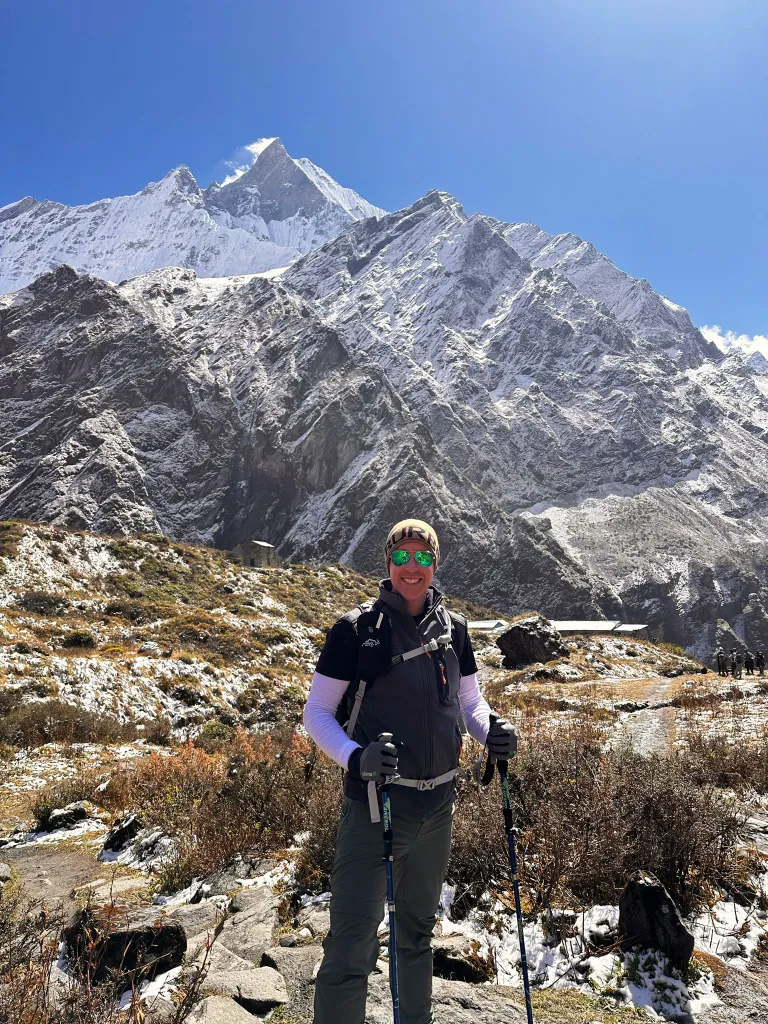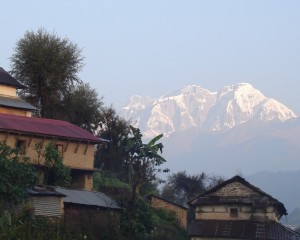How can a beginner solo trek in Nepal?
Nepal offers a trekking experience like no other. However, a beginner solo trek in Nepal can be difficult.
But from experienced to beginner, everyone is welcomed by the Nepalese trails. Its breathtaking landscapes, diverse cultures, and majestic mountains make it a dream destination for adventurers worldwide.
From short and scenic walks to challenging high-altitude treks, there's a trail suited for every adventurer.
What's so remarkable about beginner solo trek in Nepal?
Nepal's Natural Beauty: Solo Trekking Guide for Beginners
Nepal is a trekker's paradise, as reflected by various trekking routes supporting all experience levels.
The Annapurna, Langtang, and Everest are famous trekking routes. It highlights the Himalayas' stunning beauty, lush forests, and quaint villages.
Each route presents a unique blend of natural wonders and cultural immersion, making every step memorable.
Advantages and Challenges of a Beginner Solo Trek in Nepal
Advantages
Freedom and Flexibility: Solo trekking allows you to set your own pace and make spontaneous decisions. You can spend more time at places that captivate you and adapt your itinerary as you see fit.
Personal Growth: Trekking alone can be a transformative experience. It pushes you out of your comfort zone, fostering independence and self-reliance.
Cultural Interaction: Traveling solo encourages interactions with locals and fellow trekkers. It can lead to profound cultural experiences and lasting friendships.
Challenges
Navigation: Finding your way can be tricky, especially in less-travelled areas. Carrying a map, compass, or GPS device is essential.
Safety: Solo trekking poses unique safety concerns. You should have a reliable communication device. Informing someone about your plans and adhering to local guidelines are crucial.
Loneliness: While solitude can be rejuvenating, moments of loneliness may arise. Engage with other trekkers and locals can help alleviate this feeling.
Logistics: You should handle accommodations, permits, and meals can be more challenging without a group. Proper planning and research are essential.
Preparation for Any Beginner Solo Trek In Nepal
It would help if you started on a solo trek in Nepal requires careful planning and preparation.
Choose the Right Trekking Route
It would help if you went for trekking routes that are relatively short and have moderate levels of difficulty. These routes can introduce the world of trekking and allow you to acclimate to the altitude and terrain.

However, consider trekking in well-known regions like Annapurna and Langtang. These areas offer a range of trekking options with well-maintained trails, comfortable accommodations, and stunning vistas.
Researching and Understanding the Trail
It would help if you researched the trail's terrain and altitude changes. At the same time, understanding the weather patterns for the time of year, you plan to trek is vital. The knowledge will help you pack appropriately and anticipate challenges.
Check the permits required for your chosen trek. Some areas demand special permits, while others might need only a national park entry permit. Research the entry procedures and fees to avoid any last-minute complications.
Physical and Mental Preparation
Fitness Training and Conditioning
Begin a fitness regimen that includes cardiovascular exercises, strength training, and endurance-building activities. Focus on exercises that strengthen your legs, core, and cardiovascular system.
Acclimatization and Altitude Sickness Awareness
Understand the importance of acclimatization to avoid altitude sickness. Acquaint yourself with the symptoms and know when to ascend slowly or take rest days.
Packing Essentials
Pack light, but ensure you have the essentials. Items such as sturdy hiking boots, moisture-wicking clothing, a warm jacket, a hat, sunglasses, sunscreen, a reliable backpack, a water bottle, and a headlamp are crucial.
Solo Trek Safety Tips
Share your itinerary and expected return date with a friend, family member, or your accommodation. Regular updates offer peace of mind to both you and your loved ones.
You should stick to established paths and avoid shortcuts. It might lead to unfamiliar and potentially hazardous areas.
Additionally, equip yourself with a reliable means of communication like a satellite phone or locator beacon, especially when trekking in remote regions with limited cell reception.
Familiarize yourself with local traditions, customs, and rules to demonstrate respect for the communities you encounter and to prevent any unintentional cultural misunderstandings.
Embracing the Culture
While preparing for a solo trek in Nepal is primarily about exploring nature. It's also an opportunity to connect with the local culture and positively impact the communities you encounter.
Interacting with Locals
Pick up a few simple Nepali phrases to show respect and engage with locals. It can lead to meaningful interactions and bridge cultural gaps.
Also, approach encounters with humility and respect. Seek permission before taking photographs, and ask questions about local traditions and customs when appropriate.
Responsible Trekking Practices
Follow the ideology of Leave No Trace, such as packing out your waste, avoiding littering, and staying on designated trails.
Purchase goods and services from local communities along your trek. It directly contributes to the local economy and fosters a positive relationship between trekkers and locals.
Trekking Experience
You can prepare for the trek early with the most daylight hours. Meanwhile, avoid trekking during the hottest part of the day. Stay hydrated and refuel with snacks and meals to maintain energy throughout the day.

Take your time with the trek. Take breaks to enjoy the stunning scenery and capture the moments with your camera. Engage with other trekkers along the way. Sharing experiences and stories can enhance the journey.
How can you overcome challenges?
Pushing Through Physical Strain
When fatigue sets in, focus on your mental strength. Break the trek into smaller goals and celebrate your progress. Pay attention to your body's signals. Rest when needed, and don't hesitate to adjust your pace or plans if you're not feeling well.
Gaining Confidence Along the Way
Acknowledge and celebrate each achievement, whether completing a challenging section or conquering a high pass. Overcoming obstacles fosters adaptability and builds self-assurance.
What can a beginner for a solo trek in Nepal do after the trek?
Sharing Your Journey
You can write a journal, take photos, or create a travel blog to capture your trekking adventure. Share your stories and photos with friends, family, or online communities to inspire others and relive your memories.
Lessons for Future Treks
Evaluate the challenges you faced and how you overcame them. Use these lessons to enhance your future trekking experiences. Consider what worked well and what you could improve for your next solo trek. Each journey is a learning opportunity.
Trekking solo in Nepal as a beginner is a remarkable journey that offers adventure, self-discovery, and cultural exploration. Nepal Vision Treks helps you tackle all the problems during your adventure and provides the best trekking experience in town.
FAQS
1) Can you trek alone in Nepal?
Yes, you can trek alone in Nepal.
2) What is the easiest trek in Nepal?
The Ghorepani Poon Hill Trek is often considered the easiest trek in Nepal.
3) What is the cheapest way to trek in Nepal?
Opting for independent teahouse trekking without a guide or porter tends to be the cheapest way to trek in Nepal.
4) Is it awkward to hike alone?
Hiking alone can be a mix of solitude and empowerment, with moments of self-discovery and connection to nature.
5) Can you trek without a guide in Nepal?
As of April 1, tourists travelling to Nepal must hire a licensed guide or porter before trekking through the country's wilderness.
6) What's the best time for solo trekking in Nepal?
The peak trekking seasons are autumn (September to November) and spring (March to May) when the weather is clear and comfortable.
7) Do I need special permits for solo trekking in Nepal?
Some trekking areas, such as the Annapurna and Everest regions, require special permits. It's important to research and obtain the necessary permits before your trek.
8) How physically fit must I be for solo trekking in Nepal?
While fitness levels vary, being moderately fit and engaging in physical training before your trek can greatly enhance your experience and help you tackle the trails more easily.
9) Will I lose weight trekking in Nepal?
Trekking in Nepal can lead to weight loss due to increased physical activity and potential calorie expenditure, but individual outcomes vary.






